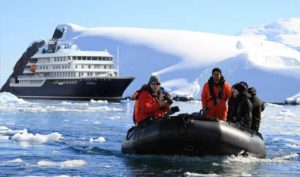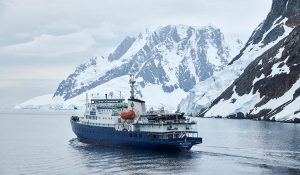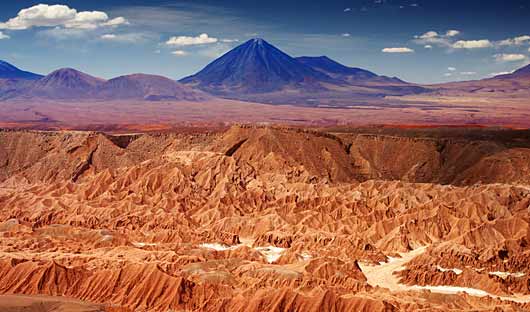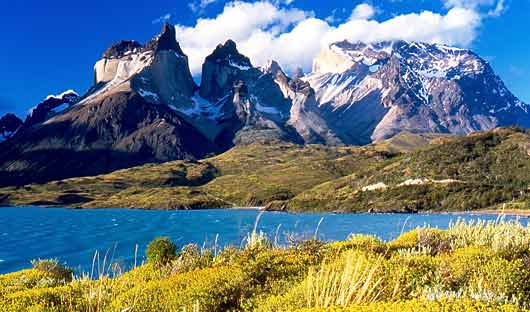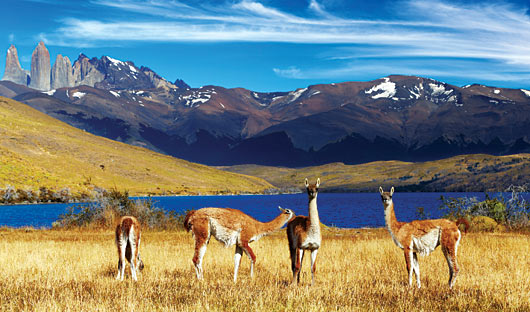FALKLAND ISLANDS – SOUTH GEORGIA – ELEPHANT ISLAND – ANTARCTICA – POLAR CIRCLE
__________________
23 DAYS
ITINERARY SUMMARY
| Day | Place | Highlights |
|---|---|---|
| Day 1 | Ushuaia, Argentina | Embark and sail the Beagle Channel |
| Day 2 | At Sea | South Atlantic Ocean towards the Falkland Islands |
| Day 3 | Westpoint Island and Saunders Island | Abundance of wildlife, from dolphins to albatrosses |
| Day 4 | Port Stanley | Victorian-era charm, visit the museum |
| Days 5 - 6 | At Sea | Cross the Antarctic Convergence, observe a multitude of seabirds |
| Days 7 - 10 | South Georgia | Fortuna Bay, Salisbury Plain, St. Andrews Bay, Gold Harbour, Grytviken |
| Day 11 - 12 | Southern Ocean and South Orkney | Visit Orcadas Base, an Argentine scientific station on Laurie Island, spectacular scenery and wildlife |
| Day 13 | Elephant Island | Point Wild, ice cliffs and vertical rock-faces |
| Day 14 | Antarctic Sound | Witness colossal tabular icebergs |
| Day 15 | South Shetland Islands | Wide variety of flora and fauna, Deception Island, hiking |
| Days 16 - 20 | Antarctica | Neko Harbour, Paradise Bay, Crystal Sound, Detaille Island, Pourquoi Pas Island, Horseshoe Island |
| Days 21 - 22 | At Sea | Crossing the Drake Passage |
| Day 23 | Ushuaia | Disembark and farewell your fellow expeditioners |

SHIPS OFFERING THIS ITINERARY
HONDIUS
The Hondius (176 guests) takes her maiden voyage in 2019. She has an Ice class rating of 6, the most advanced to date. The Hondius will offer deluxe accommodations for a total 176 guests. One deck has been entirely reserved for lectures and presentations in one large observation lounge. The ship’s main focus remains discovery, taking advantage of wildlife opportunities and the related shore activities. Efficient zodiac embarkation is guaranteed with two separate gangways and in addition a zodiac embarkation indoor-platform which can also be used for special activities such as kayaking.
PLANCIUS
The Plancius accommodates up to 108 passengers in 53 passenger cabins all with private ammenitiies. Built in 1976 as an oceanographic research vessel for the Royal Dutch Navy she sailed for the Navy until 2004 when she was used as an expedition vessel. Completely rebuilt in 2009 and later upgrades in 2019, the complies with the latest SOLAS-regulations. Offering a restaurant/lecture room on deck 3, a spacious observation lounge with large windows and a bar on deck 5 and a library on deck 5there is no shortage of places to relax. There are large open deck spaces on the Plancius, especially on Deck 4 with full walk-around possibilities for optimal wildlife spotting and enjoying the scenery. The Plancius carries 10 Mark V zodiacs, with 40 HP 4-stroke outboard engines and 2 gangways on the starboard side, guaranteeing a swift zodiac operation. Whilst the Plancius is comfortable and well equipped, she is in no way a luxury vessel. The focus is in spending as much time on shore as possible with an exploratory educational travel programme with 8 highly knowledgeable expedition staff.
Day 1 Embarkation in Ushuaia, Argentina
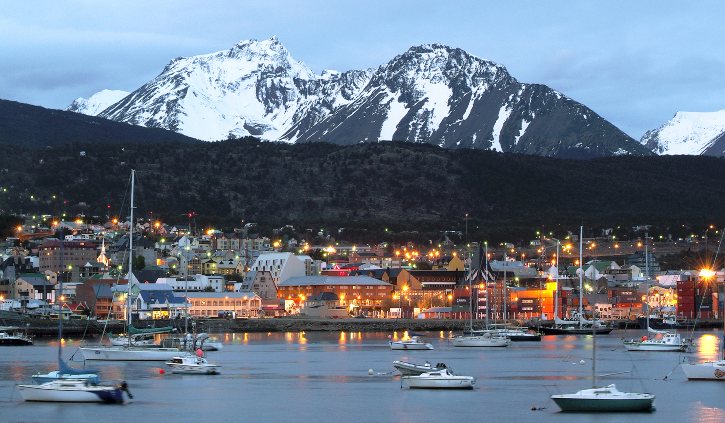
Your voyage begins where the world drops off. Ushuaia, Argentina, reputed to be the southernmost city on the planet, is located on the far southern tip of South America. Starting in the afternoon, you embark from this small resort town on Tierra del Fuego, nicknamed “The End of the World,” and sail the mountain-fringed Beagle Channel for the remainder of the evening.
Day 2 At Sea

Head out on deck to try and spot passing dolphins and whales. The expedition team will be conducting presentations and workshops, and you will have some time to enjoy the onboard recreation facilities. Several species of bird follow the vessel southeast, such as albatrosses, storm petrels, shearwaters, and diving petrels.
Day 3 Westpoint Island and Saunders Island
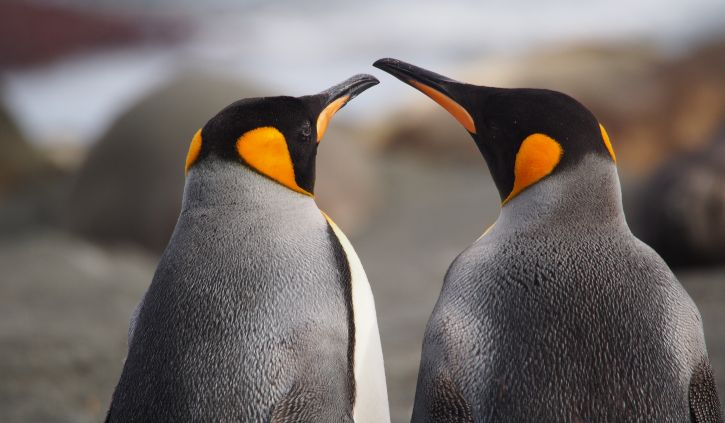
The Falkland Islands offer an abundance of wildlife that is easily approachable, though caution is always advised. These islands are largely unknown gems, the site of a 1982 war between the UK and Argentina. Not only do various species of bird live here, but chances are great you’ll see both Peale’s dolphins and Commerson’s dolphins in the surrounding waters.
During this segment of the voyage, you may visit the following sites:
Westpoint Island – This beautiful island hosts a bounty of birdlife, from shore birds near the landing site to black-browed albatrosses on the nest. Among them is a rookery of rockhopper penguins who have to undertake an incredible climb from the sea to get to their nests among the albatrosses.
Saunders Island – On Saunders Island you can see the black-browed albatross and its sometimes-clumsy landings, along with breeding imperial shags and rockhopper penguins. King penguins, Magellanic penguins, and gentoos are also found here.
Day 4 Port Stanley
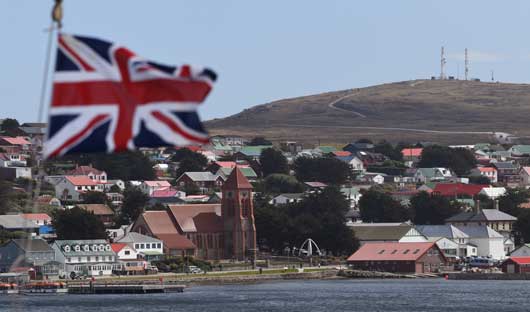
The capital of the Falklands and center of its culture, Port Stanley has some Victorian-era charm: colorful houses, well-tended gardens, and English-style pubs are all to be found here. You can also see several century-old clipper ships nearby, silent witnesses to the hardships of 19th century sailors. The small but interesting museum is also worth a visit, covering the early days of settlement up to the Falklands War. Approximately 2,100 people live in Port Stanley. Admission to the museum is included.
Days 5 – 6 At Sea
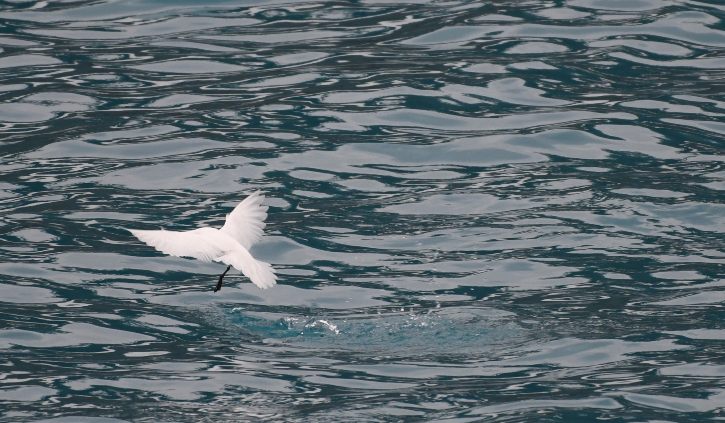
The ship will head east toward South Georgia. You will cross the Antarctic Convergence which is a biological boundary of the Southern Ocean, the temperature cools considerably within the space of a few hours, and nutritious water rises to the surface of the sea due to colliding water columns. This phenomenon attracts a multitude of seabirds near the ship, including several species of albatross, shear waters, petrels, prions, and skuas. The expedition team will continue the educational program and you can learn about the history of South Georgia and the wildlife found on South Georgia.
Days 7 – 10 South Georgia

South Georgia is renowned for the sub-antarctic wildlife viewing on a beautiful landscape. The islands are home to 100 million seabirds, including numerous species of albatross, penguins, prions, petrels, and terns. On beaches such as those at Salisbury Plain and St. Andrews Bay, over 100,000 elephant seals and three million fur seals jostle for space among penguins including king penguins and macaroni penguins.
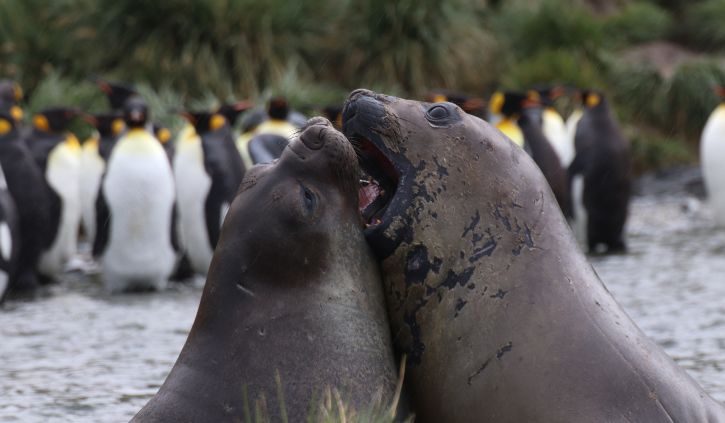
Sites you may visit include:
Fortuna Bay – A beautiful outwash plain from Fortuna Glacier is home to a large number of king penguins and seals. Here you may also have the chance to follow the final leg of Shackleton’s route to the abandoned whaling village of Stromness. This path cuts across the mountain pass beyond Shackleton’s Waterfall, and as the terrain is partly swampy, be prepared to cross a few small streams.
Salisbury Plain, St. Andrews Bay, Gold Harbour – These sites not only house the three largest king penguin colonies in South Georgia, they’re also three of the world’s largest breeding beaches for Antarctic fur seals. Literarily millions breed on South Georgia during December and January. By February the young fur seals are curious and playful and fill the surf with life and fun and large elephant seals come to the beaches to moult.
Grytviken – In this abandoned whaling station, king penguins walk the streets and elephant seals lie around like they own the place – because they basically do. Here you might be able to see the South Georgia Museum as well as Shackleton’s grave.
Days 11 – 12 Southern Ocean and South Orkney
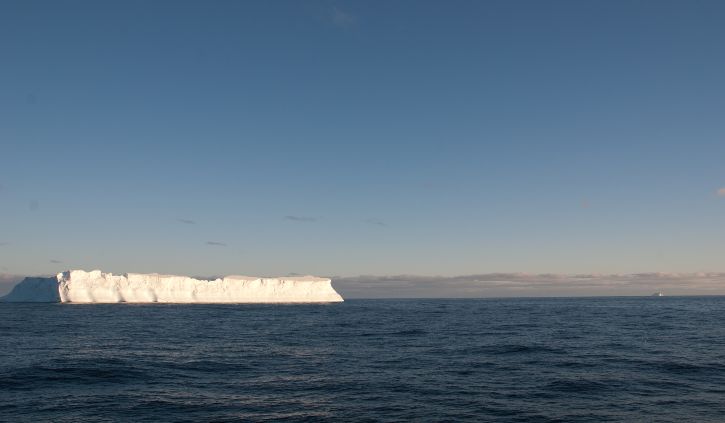
While you are at sea enjoy presentations from the expedition team on Antarctic wildlife, history and geology preparing you for the meeting with wild spaces of the Seventh Continent. Depending on the conditions, you might visit Orcadas Base, an Argentine scientific station on Laurie Island in the South Orkney archipelago. The personnel here will happily show you their facility, where you can enjoy expansive views of the surrounding glaciers. If a visit isn’t possible, you may instead land in Signy Island’s Shingle Cove.
Day 13 Elephant Island
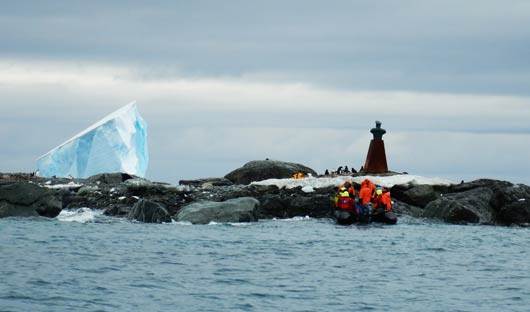
Day 14 Antarctic Sound
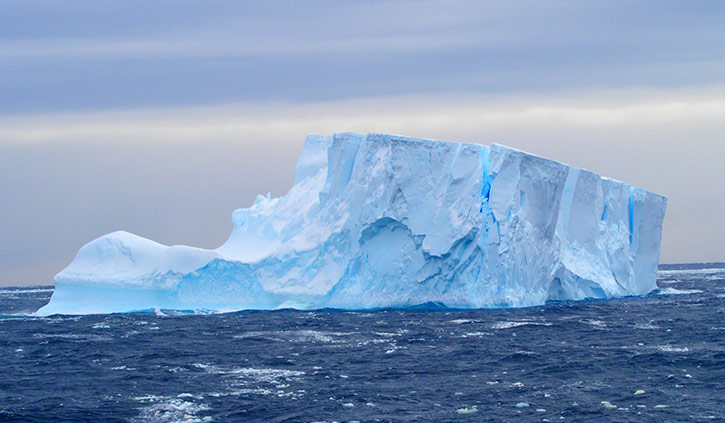
If ice permits, you sail into the Antarctic Sound at the northwestern edge of the Weddell Sea. Here colossal tabular icebergs herald your arrival to the eastern edges of the Antarctic Peninsula. Brown Bluff is a potential location for a landing, where you may get the chance to set foot on the continent.
Day 15 South Shetland Islands
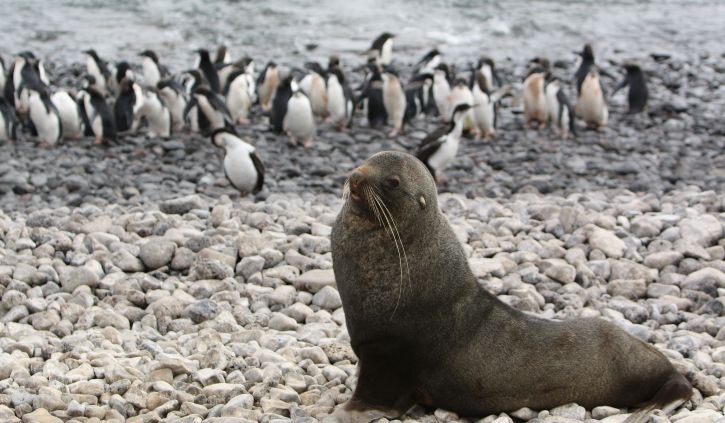
The volcanic islands of the South Shetlands are windswept and often cloaked in mist, but they do offer subtle pleasures: There’s a wide variety of flora (mosses, lichens, flowering grasses) and no small amount of fauna (gentoo penguins, chinstrap penguins, southern giant petrels).
In Deception Island, the ship plunges through Neptune’s Bellows and into the flooded caldera. Here you find an abandoned whaling station, and thousands of cape petrels – along with kelp gulls, brown and south polar skuas, and Antarctic terns. A good hike is a possibility in this fascinating and desolate volcanic landscape.
Days 16 – 20 Antarctica
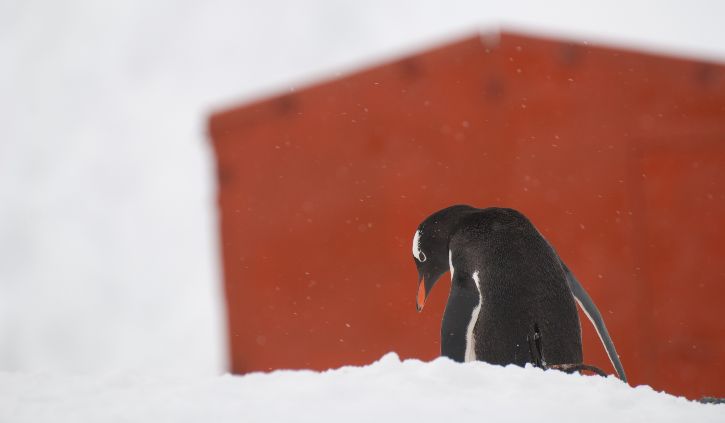
Gray stone peaks sketched with snow, towers of broken blue-white ice, and unique polar wildlife below and above welcome you into the otherworldly expanse of Antarctica. You enter the area around Gerlache Strait, venturing into one of the most beautiful settings Antarctica has to offer.
Sites you may visit here include:
Neko Harbour – An epic landscape of mammoth glaciers and endless wind-carved snow, Neko Harbour offers opportunities for a Zodiac cruise and landing that afford the closest views of the surrounding alpine peaks.
Paradise Bay – You may be able to take a Zodiac cruise in these sprawling, ice-flecked waters, where there’s a good chance you’ll encounter humpback and minke whales.
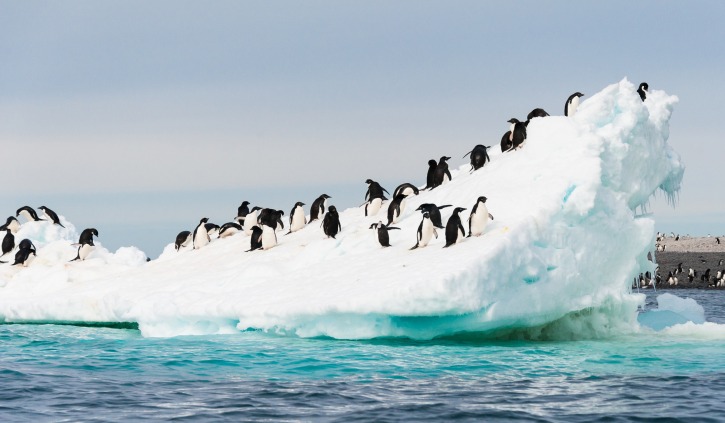
The aim is then to head south. If conditions allow, sites you can visit ‘over’ the polar circle include:
Crystal Sound – Your journey takes you south along the Argentine Islands to this ice-packed body of water, and from here across the Polar Circle in the morning.
Detaille Island – You may make a landing at an abandoned British research station here, taking in the island’s lofty mountains and imposing glaciers.
Pourquoi Pas Island – You might circumnavigate this island, named after the ship of the famous French explorer Jean-Baptiste Charcot. This location is known for its tight fjords and lofty, glacier-crowded mountains.
Horseshoe Island – This is the location of the former British Base Y, a remnant of the 1950s that is now unmanned though still equipped with almost all the technology it had while in service.
Days 21 – 22 At Sea
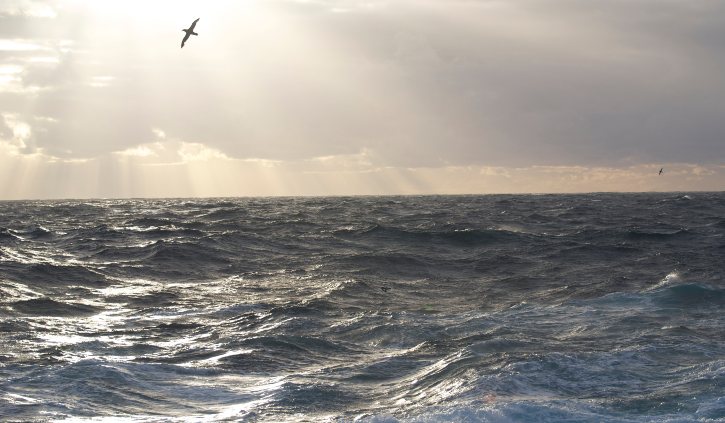
As you cross the Drake Passage you will have time to reflect on an incredible voyage with your new friends. Sea birds will follow the ship and the education program will keep you entertained.
Day 23 Ushuaia
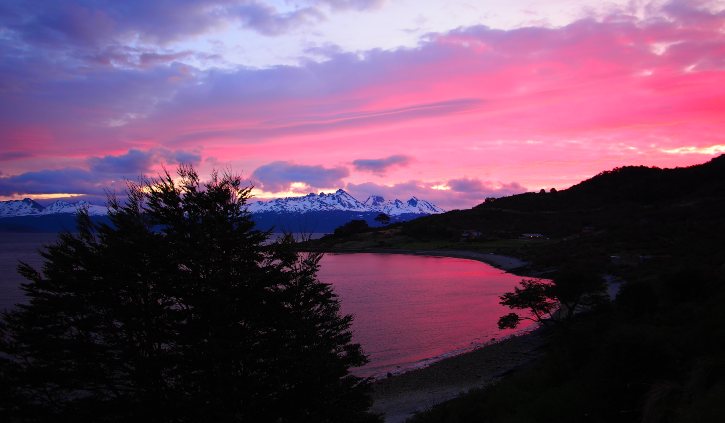
After breakfast, disembark and say farewell in the city of Ushuaia, the southern most city in the world.
EXTEND YOUR TRIP TO PATAGONIA
To make the most of your time in South America we can tailor a holiday to Patagonia to suit your voyage dates. If you have a bit more time we can create a tailor-made itinerary to some of the highlights of South America. Take a look at the Patagonia sample itineraries below and contact us to begin creating your perfect holiday.


